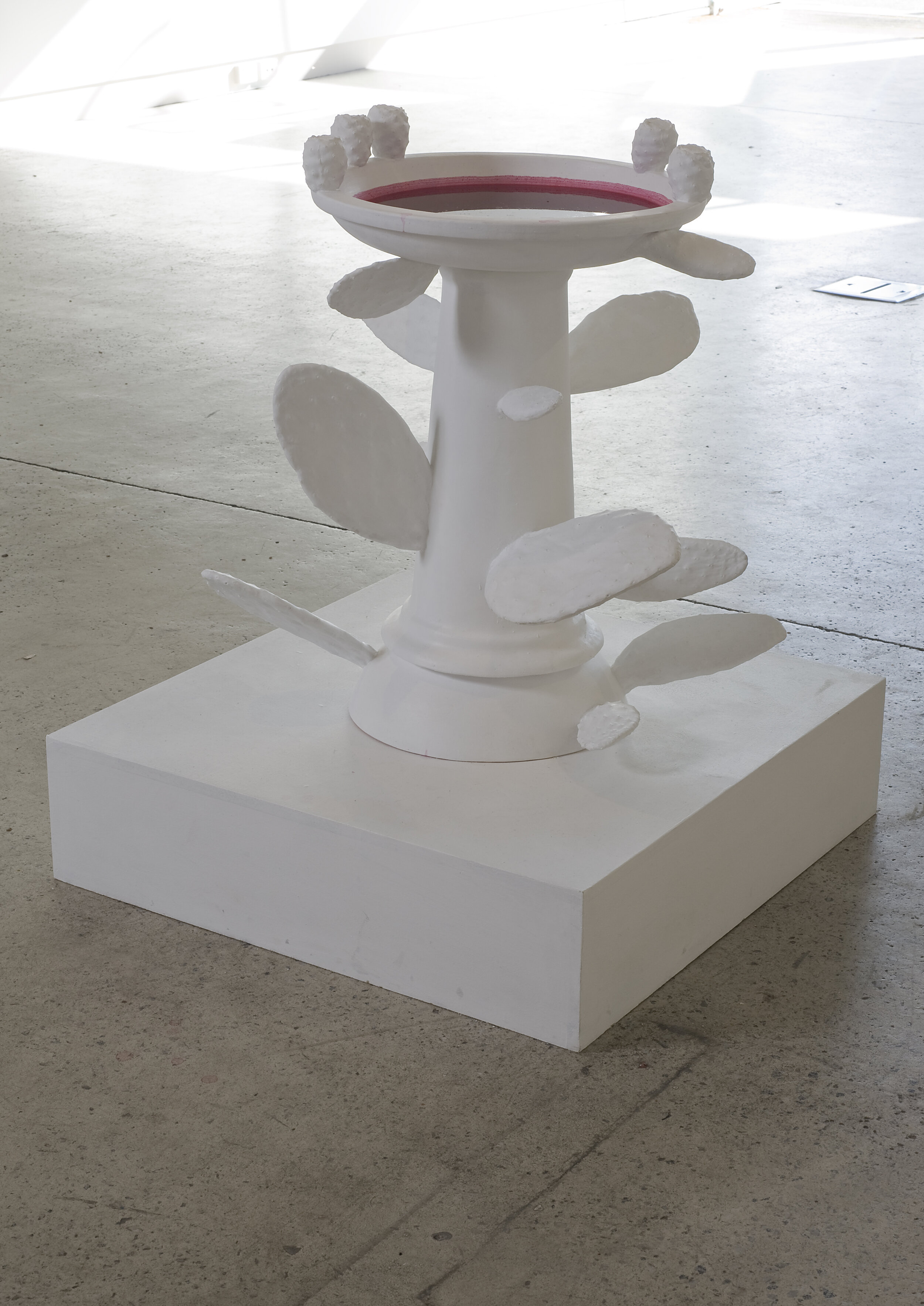Paradise Lost
Sculpture.
A white birdbath sprouts prickly pear paddles and fruits; the dish is filled with cochineal red coloured water. Text on the inner lip of the dish reads “Paradise Lost” in reflection on the surface of the birdbath’s water. Paradise Lost is a memorial birdbath sculpture to the passing of the Paradise Parrot and of a landscape forever changed.
The last documented sighting of Psephotus pulcherrimus, the Paradise Parrot, was in 1927. Among the causes for its extinction is the loss of habitat due to the infestation of the Opuntia, Prickly Pear. Prickly Pear came to Australia on the first fleet, collected by Capt. Arthur Philip in Brazil. The cactus is habitat for the cochineal insect, which on crushing produces a sought-after red dye used to colour British Soldiers red coats. The prickly pear was cultivated for a cochineal dye industry in Botany Bay, under the recommendation of Sir Joseph Banks. The prickly pear spread and became one of the most invasive weeds Australia has known to date. The landscape of Queensland and NSW bore the brunt of this infestation, over 25 million hectares of land overrun by 1925.






Joanne Mott
Paradise Lost
2010
Materials: Cement, terracotta, acrylic paint, water, cochineal.
Size: Approx 1000mm high x 700mm diameter
Photography : John Brash and John Power